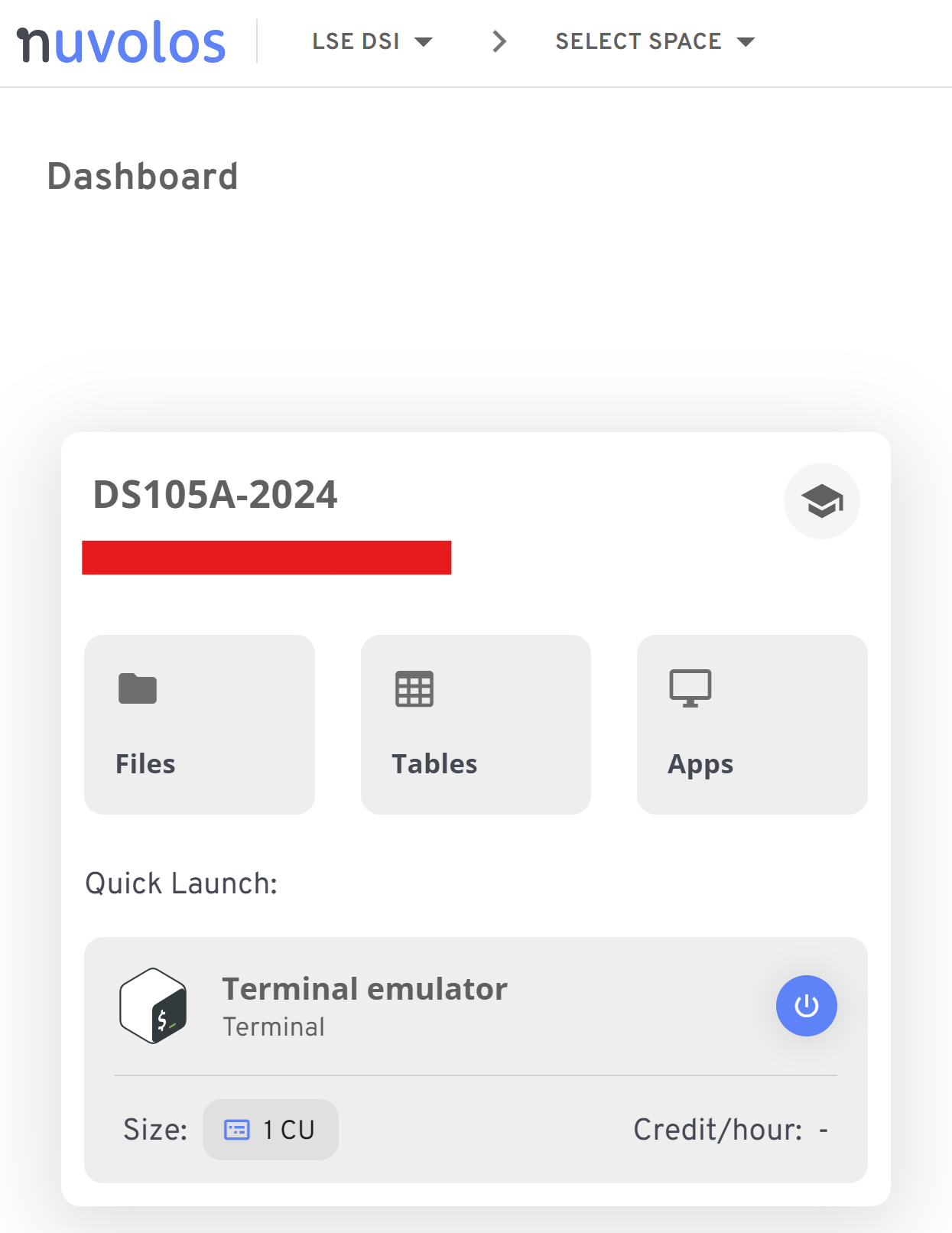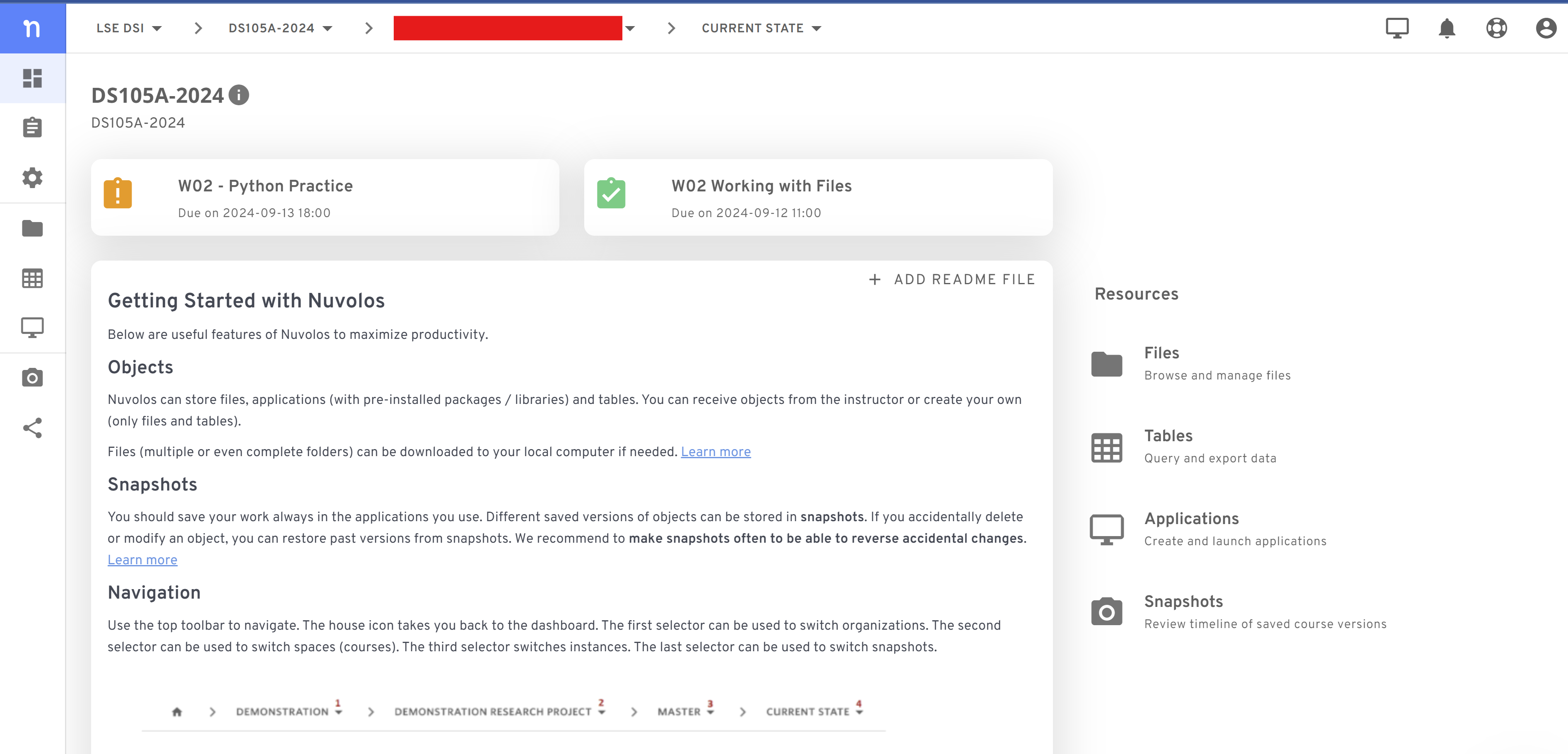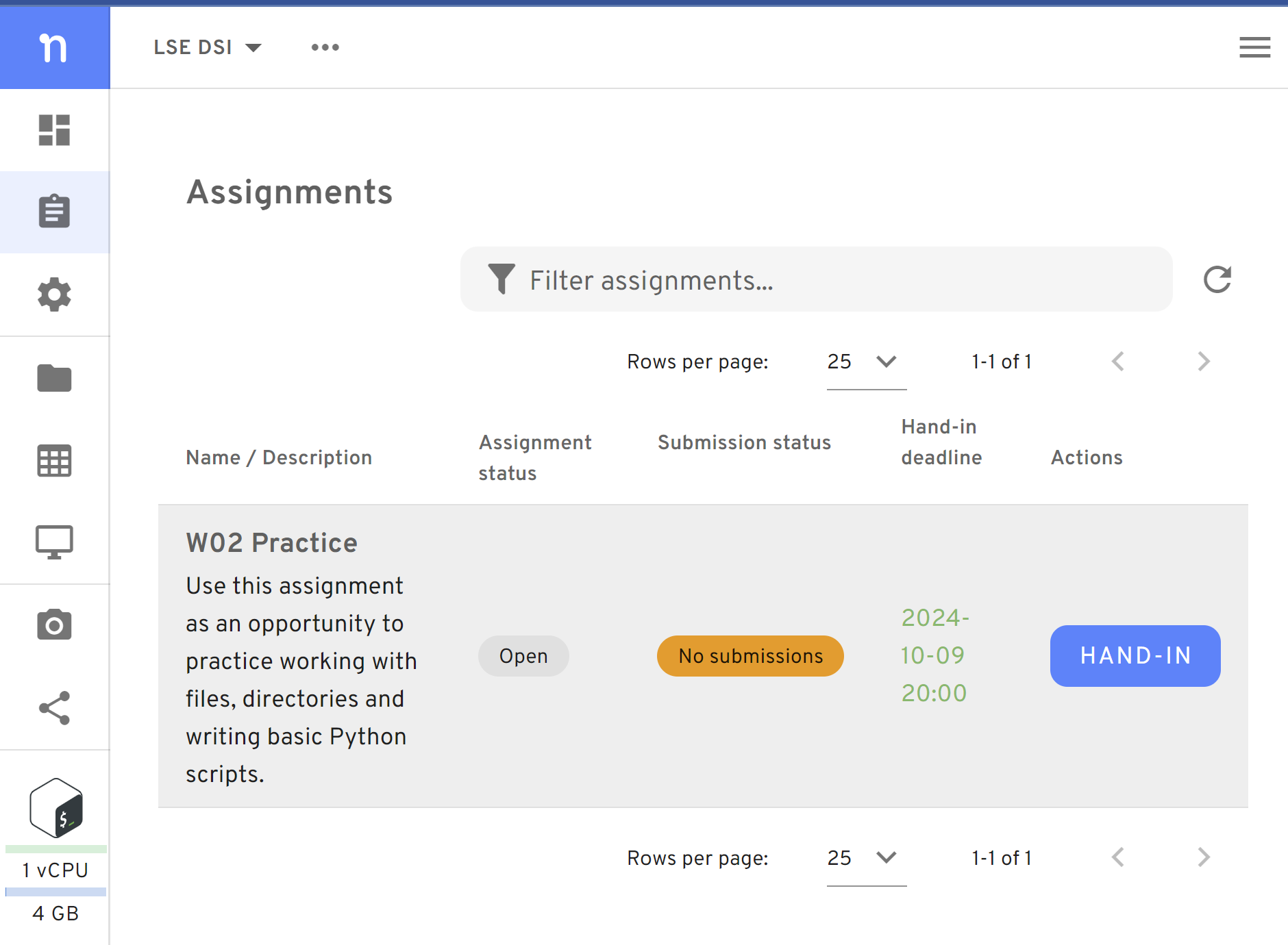

 Setting up Nuvolos
Setting up Nuvolos
📋 NOTE:
This page was completely rewritten on 4 October 2024, around 3pm, to address the issues students were having with the Nuvolos invitation link.
The guide below has more screenshots and has a new set of instructions that I have tested myself, after interacting with the Nuvolos IT team.
If you still have issues, please raise them on the #help channel on Slack, giving me context into what’s going on. Post screenshots of error messages when possible.
What is Nuvolos?
Nuvolos is a cloud-based platform that offers an interface for accessing the terminal and writing and running Python scripts directly from your browser – no installation required.
Why use this platform?
To practice the Terminal & Python commands without having to install anything on your computer.
When you need to run a piece of code that will take a long time to execute, you can run it on Nuvolos and continue working on your computer.
If your computer cannot run the software required for a specific task, you can use Nuvolos to run it.
👉 First Time Accessing Nuvolos? Click here.
You need an invitation link!
For security reasons, I cannot post the invitation link here on the public website. Please click here to view the uncesored version of this page on Moodle. The invitation link is available there.
Using Nuvolos
If you already have a Nuvolos account, simply go to the  Nuvolos website and login using the credentials you provided when you created the Nuvolos account.
Nuvolos website and login using the credentials you provided when you created the Nuvolos account.
Access the platform. After logging in, you will be able to access the platform. You will see a screen similar to the one below:

Figure 6. Your Nuvolos frontpage will have a ‘Space’ dedicated to this course. Click on the ‘DS105A-2024’ word to access the Overview page.

Figure 7. The Overview page has a list of all available assignments (if any) at the top and a bit of information about how to use the platform.
Run applications like the Terminal or VS Code
Visit the ‘Applications’ tab to see the available apps. You should see the Terminal app enabled by default and eventually other apps like VS Code.

💡 Tip: Although the 📝 W01 Formative Exercise assumes you are using the Terminal on your computer, feel free to use the Nuvolos Terminal.
Run Python
Nuvolos already comes with Python installed and pre-configured. Simply open the Terminal or the VS Code app and type python to start the Python interpreter.
💡 Tip: The 📝 W02 Formative Exercise will guide you through running Python scripts on Nuvolos.
Run Jupyter Notebooks
We will run Jupyter Notebooks exclusively via the VS Code application - whether on Nuvolos or on your computer.
💡 Tip: The 📝 W03 Formative Exercise will guide you through running Jupyter Notebooks on Nuvolos.
Submitting Assignments
When an assignment is available, the instructions will tell you that you need to create or modify files in specific folders. Follow the instructions of the assignment guide to complete the work then follow the steps below to submit your work.
👉 The first assignment that explicitly requires a submission is the 📝 W02 Formative Exercise.
When it is time to submit your work, follow these steps:
Go to the Assignments Tab. There you will find the list of assignments available.
For example, if you are working on the 📝 W02 Formative Exercise, locate the assignment named ‘📝 W02 Formative Exercise’ and click on the ‘Hand-In’ Button

Figure 6. In the assignments page, you will find the ‘Hand-In’ button Hand-in the submission. You will see a list of all the files you changed or created which are related to the assignment.
You will also be asked to type an identifier. Use your LSE candidate number as the identifier.

Figure 7. You will be asked to type an identifier. Please add your LSE candidate number. Re-submit whenever you want. If you need to make changes to your submission, you can hand it in again. Only the last submission will be the one considered for feedback.
